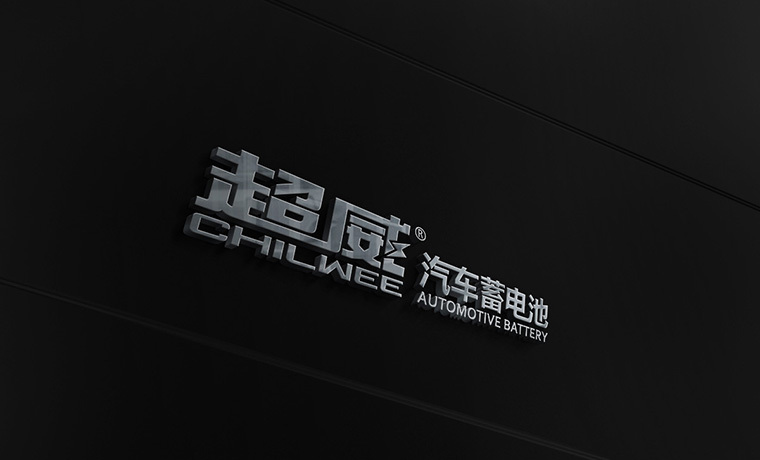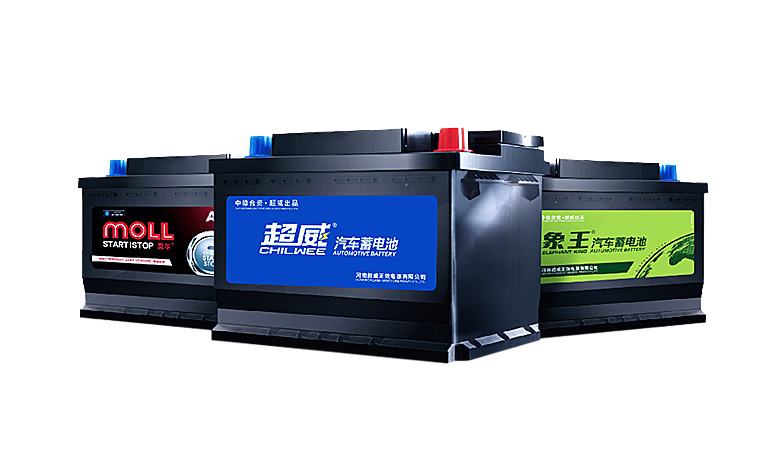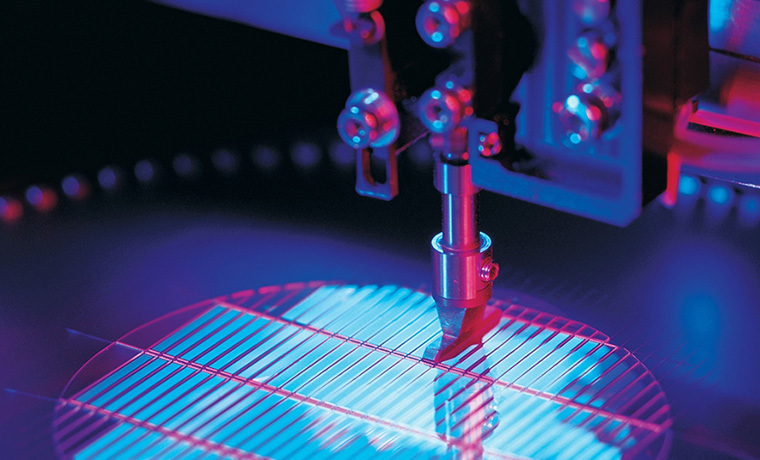Battery Maintenance
Knowledge of battery maintenance
Detail
Precautions for batteries
Before installation, check whether the battery is damaged or leaking, and clean the surface of the battery with a dry cloth. If the shell of the battery is cracked or leaking, replace the battery immediately to avoid acid corrosion.
The batteries shall be installed upright and not upside down. The spacing between adjacent batteries shall be more than 2mm. The batteries shall be anti-vibration and anti-pressure. The batteries shall be installed firmly. During use, the batteries shall not move, impact, rub against each other and water shall not enter the batteries.
To ensure safe use, the battery box where the battery is installed must be provided with a vent hole of not less than 8mm, and it must not be blocked to prevent the gas generated by the battery from accumulating in the battery box.
The batteries shall be connected in series, and the positive and negative polarities shall be correct, and the connection points shall be in good contact, and no spark should be generated.
Electric locks, safety seats and other devices that are prone to spark should be isolated from the battery.
The battery is charged before leaving the factory. Usually, users can load it directly. If it is put on hold for a long time (more than 2 months), it should be recharged before use: Plug the charger into the battery box and then connect it with 220V AC. After the charger turns green and continues charging for 1 ~ 2 hours, you can stop charging.
When an electric vehicle is running, it's best to charge it after the battery has used up about 80% of its power, not after the battery is exhausted. If the battery is exhausted, the power supply should be turned off, and the battery's 'recovery voltage' should not be used to force it to run, so as to prevent the battery life from being shortened due to 'over-discharge'. (The minimum battery protection voltage of 36-volt electric moped is 31.5 volts, and that of 48-volt electric moped is 42 volts)
The charger used with the vehicle should match the battery pack and meet the requirements of the charger parameter table in this instruction, otherwise it will damage the performance of the battery.
The battery should be fully charged after the electric car is not used for a long time, and it is strictly forbidden to store it in a deficit state for a long time.
If the continuous charging time of the battery exceeds 10 hours, the charger still does not change the lamp or the battery is hot, it should immediately stop charging and hand it over to the battery after-sales service. It is strictly forbidden to continue charging without changing the lamp.
Batteries of different models, brands, old and new cannot be mixed.
Keep batteries away from the fire source and heat source. It is strictly forbidden to be exposed to the sun in hot season. The battery should avoid violent vibration, collision and short circuit between positive and negative electrodes.
The capacity of the battery is based on the ambient temperature of 25℃. When the temperature drops by 1℃, the capacity of the battery drops by about 1%. The influencing factors of the ambient temperature should be considered in use.
The battery should be used in the low temperature environment below -10℃ as far as possible.
Battery is a consumable. After a period of charge and discharge cycle, the battery capacity will gradually decrease, resulting in a decrease in the mileage of electric vehicles, which is a normal phenomenon. However, if the battery capacity drops below 60% of the standard value within the warranty period, it will be regarded as battery failure. Please contact us in time. After the warranty period expires, although the battery capacity drops below 60% of the standard value, it is a normal loss and does not belong to the warranty scope.
If the battery is used beyond the warranty period, it should be handed over to the professional maintenance personnel of our company for a comprehensive inspection, and it can only be used after confirming that there are no potential safety hazards.
The electrolyte in the battery is highly corrosive acid, so don't splash it on the skin or clothes. If it does, wash it with plenty of water immediately, and send it to the hospital for treatment in severe cases. 18. Please hand over the scrapped batteries to the recycling station (merchant) for unified treatment, and do not discard them at will.
The heart of electric car: Is it important to select batteries?
As one of the key components of battery electric vehicle, it can also be called the heart of electric vehicle. Therefore, it is very important to select the battery of electric vehicle. Pay special attention to the following four points:
1. Check whether the product logo is complete, including the manufacturer's name, product specifications, manufacturing date and trademark; Check whether the internal and external signs are consistent, especially whether the products have eye-catching signs and whether the production date is in the recent past.
2. Pay attention to the appearance of the battery: Check whether the product is deformed, cracked, scratched and leaking. The battery terminals should be clean, free from corrosion and marked clearly.
3. Pay attention to the rated capacity marked on the battery products of electric vehicles: The greater the rated capacity of the battery, the longer the battery discharge time. It is best not to buy the battery without the rated capacity, but pay attention to whether it is for electric vehicles. If there are multiple capacity labels, the rated capacity shall prevail.
4. It is necessary to purchase brand batteries of well-known enterprises and large enterprises: Electric vehicles are generally provided by professional battery manufacturers. The quality of batteries produced by different brands and manufacturers is different, and the price is also different. Well-known and large-scale enterprises have large scale, strong technology, good after-sales service and guaranteed battery quality.
Test method of battery charge point?
There are usually two methods to check whether the electric capacity of common zinc-manganese dry batteries is sufficient.
The first method is to estimate the internal resistance of the battery by measuring the instantaneous short-circuit current of the battery, and then judge whether the battery capacity is sufficient. The second method is to connect an ammeter in series with a resistor with an appropriate resistance, and calculate the internal resistance of the battery by measuring the discharge current of the battery, so as to judge whether the battery capacity is sufficient.
The biggest advantage of the first method is that it is simple, and the power of the dry battery can be directly judged by using the high current gear of the multimeter. The disadvantage is that the test current is very large, far exceeding the limit value of the allowable discharge current of the dry battery, which affects the service life of the dry battery to a certain extent.
The advantage of the second method is that the test current is small and safe, and generally it will not adversely affect the service life of the dry battery, but the disadvantage is that it is more troublesome. It is understood that a new No.2 dry battery and an old No.2 dry battery are tested and compared by MF47 multimeter with the above two methods.
Assume that ro is the internal resistance of dry battery and RO is the internal resistance of ammeter. When using the second test method, RF is the additional series resistance with a resistance of 3Ω and a power of 2W. The measured results are as follows.
The new No.2 battery E=1.58V (measured by 2.5V DC voltage level), and the internal resistance of voltmeter is 50kΩ, which is much larger than ro. Therefore, it can be approximately considered that 1.58V is the electromotive force of the battery, or the open circuit voltage.
With the first method, the multimeter is set to 5A DC current, the internal resistance RO of the meter is 0.06Ω, and the measured current is 3.3A Therefore, ro+ro = ro+RO=1.58V÷3.3A≈0.48Ω, ro=0.48-0.06=0.42Ω. With the second method, the measured current is 0.395A, RF+ro+RO=1.58V÷0.395A=4Ω, and the internal resistance is 0.6Ω when the current is 500mA, so ro=4-3-0.6=0.4Ω. When the old No.2 battery is measured by the first method, the open-circuit voltage E=1.2V, the internal resistance RO=6Ω, the reading of 6.5mA, the multimeter setting 50mA DC current, ro+RO=1.2V÷0.0065A≈184.6Ω, ro=184.6-6=178.6Ω.
With the second method, the measured current is 6.3mA, ro+RO+RF=1.2V÷0.0063A=190.5Ω, ro=190.5-6-3=181.5Ω. Obviously, the results of the two testing methods are basically the same. The slight difference of the final calculation results is caused by many factors, such as reading error, resistance RF error and contact resistance. This slight error will not affect the judgment of battery power. If the capacity of the battery to be tested is small and the voltage is high (for example, 15V, 9V laminated battery), the resistance value of RF should be increased.
Car battery charging and maintenance?
What we usually call "maintenance-free battery" is not really "maintenance-free", but it means that this kind of battery does not need to be taken out and charged under normal conditions. Some maintenance-free batteries on cars are also equipped with temperature compensation hydrometers, which can indicate the storage state of the batteries and the height of the electrolyte level. When the indicator eye of hydrometer is green, it indicates that the charge is sufficient and the battery is normal; When the indicator eye has few green dots or is black, it indicates that the battery needs to be charged; When the indicator eye shows light yellow, it indicates that there is a fault inside the battery, and it needs to be repaired or replaced.
The specific gravity of the electrolyte is reduced below 1.200; Discharge exceeds 25% in winter; Discharge exceeds 50% in summer; Dim light; Unable to start, when the above situation occurs, it needs to be charged.
Some people think that fast charging can save time, and it only takes 3-5 hours. In fact, fast charging only activates the surface of the battery quickly, but in fact, the inside of the battery is not fully charged.
In addition to fast charging, there is another kind of slow charging, which takes 10-15 hours. Those deeply deficient batteries must be charged slowly, otherwise, the charging time is insufficient and the charging amount is insufficient, which will directly affect the driving performance of the car.
Although charging is a fairly simple operation, there are some precautions:
1. When charging, there can be no sparks near the battery, and smoking is prohibited.
2. Wear protective clothing when charging lead-acid batteries.
3. When charging one or more batteries in parallel, the charger voltage should not exceed 16V.
4. When turning on the charger, set it to the lowest current first, and then gradually increase the current until the battery begins to receive current.
5. Connect the positive wire of the charger to the positive pole of the battery, and connect the negative wire to the negative pole of the battery.
If it is a deeply discharged battery or a low-temperature battery, this process may take several minutes.
How to select the capacity of battery point matching with the equipment?
Calculation method:
Add the total power of the equipment
For example, the total power of the scrubber = the power of the scrubbing brush motor+the power of the suction motor+the power of the driving motor
Total power of equipment ÷ voltage of equipment = the current when discharging
The current when discharging × the working hours of the equipment = the required battery capacity
Remarks: Because of the volume of the battery slot of the equipment, the battery may not meet your requirements (because the volume of the large-capacity battery is also large), so you can only choose the large-capacity battery as much as possible to meet the demand.
How to avoid misleading in the process of selecting batteries and chargers?
Choose the right channel:
Consult with companies engaged in the battery industry
As we all know, automobile manufacturers don't produce tires and batteries, refrigerator manufacturers don't generate electricity, and cleaning equipment manufacturers and sellers don't produce batteries either, so they don't have the expertise in batteries. As far as we know, some vendors of cleaning equipment provide users with starter batteries or backup power batteries (perhaps for reasons unknown). After 3 months of use, the service time of the batteries is greatly shortened or even invalid. In addition, some sellers do not guarantee the batteries.
Remarks: Sellers of cleaning equipment can only sell machines without batteries and chargers, and don't make the mistake of thinking that you have to use their batteries and chargers for their machines (batteries and chargers and cleaning equipment are totally two industries).
Consult a company engaged in power batteries
As far as we know, some users go to the auto parts market to buy starter batteries. Sellers engaged in automotive starter batteries generally don't know much about power batteries, and even if they do, they don't have any stock. They usually need to place an order, and then they transfer the goods to a company specializing in power batteries. In addition, in order to ensure the service life of batteries, companies of power batteries are all equipped with intelligent chargers.
Pay attention to the following when purchasing::
Price:
If the price is too low, it can generally be a starter battery or an ordinary charger.
The weight of the battery:
The capacity of the battery depends on the area of the internal active material, and the main component of the lead-acid battery is lead. The specific gravity of lead is 11.36g/ cm3, so the larger the volume, the greater the capacity. In addition, if the weights of different manufacturers are compared under the same nominal capacity, the heavier the weight, the more accurate the data will be.
What is the standard of rated capacity of battery:
Because there are several different discharge rates in the world (that is, the discharge rate of a battery is expressed by the discharge time or the number of hours required to discharge the rated capacity with a certain discharge current), among which 20-hour rate, 10-hour rate and 5-hour rate are common. Generally, the nominal capacity of 20-hour rate is only 85% of that of 5-hour rate. Therefore, measuring by different standards will result in completely different usage time.
Distinguish the types of chargers:
Ask whether the charger is special for power battery
Ask whether the charger is power frequency or high frequency
Ask whether the charger has multi-stage charging function
Tell you the working voltage and capacity of the battery
Never use an open battery charger to charge the valve-regulated lean-liquid battery (so-called maintenance-free battery).
The two charging curves are different, and the termination voltage is different. If the open battery charger is used to charge the valve-regulated lean-liquid battery (so-called maintenance-free battery), the valve-regulated lean-liquid battery (so-called maintenance-free battery) will be overcharged; Conversely, it will be under-charged.
What should I pay attention to when charging an electric car in summer?
In summer, when the temperature is high, the performance of electric vehicles will fluctuate when compared with the normal temperature. Therefore, experts suggest that in this season, it is necessary to take good care of electric vehicles, and pay more attention to the precautions during use and charging.
For high temperature, there are three prohibitions on electric vehicles
It is strictly forbidden to expose electric vehicles to the hot sun;
It is forbidden to charge with electric car charger at high temperature;
It is strictly forbidden to charge immediately after driving at high temperature.
Pay attention to prevent the charging time from being too long when using, otherwise it is easy to cause the phenomenon of battery water loss, swelling and even fire.
When charging an electric vehicle with a electric car charger, you should first connect the charger to the electric vehicle, and then connect the charger to the power supply. If the order is reversed, it is easy to cause a short circuit.
In order to prevent spontaneous combustion, please keep ventilated during charging. Because the temperature is relatively high, electric car charger itself will heat up during charging, which will reduce the temperature of electric vehicles and chargers. Also, when charging, don't put the charger on the pedal of the electric car, just put it on the ground. Otherwise, the temperature of the charger is too high, and it is easy for plastic to spontaneously ignite.












